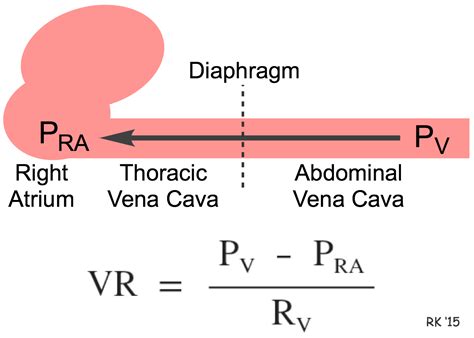lv unstressed volume | volume and venous return chart lv unstressed volume In this review, we discuss the important role of the venous system and the concepts of stressed blood volume and unstressed blood volume. We review how regulation of venous tone modifies the distribution of blood between these 2 functional compartments, the physical distribution of blood between the pulmonary and systemic circulations, and how . $5,950.00
0 · volume and venous return chart
1 · unstressed volume meaning
2 · unstressed volume and blood volume
3 · unstressed and stressed volume
4 · stressed volume and cardiac output
$12K+
In this review, we discuss the important role of the venous system and the . This is what is known as the unstressed volume. Any volume above this level is .
In this review, we discuss the important role of the venous system and the concepts of stressed blood volume and unstressed blood volume. We review how regulation of venous tone modifies the distribution of blood between these 2 functional compartments, the physical distribution of blood between the pulmonary and systemic circulations, and how . This is what is known as the unstressed volume. Any volume above this level is the stressed volume, which will exert an increasing degree of pressure on the venous vascular bed (Fig. 1). The greater the stressed volume, the greater Pms , . When venous return is limited, cardiac output can only be increased by increasing MSFP by a volume infusion, by decreasing capacitance and recruiting unstressed into stressed volume without a change in total volume (Fig. 6), or by decreasing the resistance to . Understanding volume physiology and pathophysiology can provide important insight into the clinical management and prognosis of patients with HF. Fluid volume homeostasis in health and HF requires the interaction of 2 circulatory systems, the intravascular‐ and interstitial‐lymphatic circulations.
In this review, we discuss the role of the venous system and the concepts of stressed blood volume (SBV) and unstressed blood volume (UBV). We discuss how regulation of venous tone modifies the distribution of blood between these two functional compartments. Unstressed volume represents as much as 25% of total blood volume and constitutes a significant reservoir for internally recruiting volume into the system. The difference between the total volume in the system and the unstressed volume is the relevant volume for causing pressure in the filling chamber, the stressed volume [ 8 ]. Once filled beyond this volume, however, wherein conformational changes alone cannot accept more air without requiring the balloon’s walls to stretch, the distending pressure will start to increase. The volume in the balloon below this point is called its unstressed volume.
The volume that stretches the walls is called stressed volume and the rest is called unstressed volume [19, 22]. In the circulation with minimal sympathetic tone, 25 to 30 % of total blood volume is stressed and the rest is unstressed. In this review, we discuss the important role of the venous system and the concepts of stressed blood volume and unstressed blood volume. The unstressed volume of blood is a proportion of the total blood volume which is required to fill the cardiovascular system to zero atmospheric pressure. The stressed volume of blood is the total blood volume minus the unstressed volume. In this review, we discuss the important role of the venous system and the concepts of stressed blood volume and unstressed blood volume. We review how regulation of venous tone modifies the distribution of blood between these 2 functional compartments, the physical distribution of blood between the pulmonary and systemic circulations, and how .
This is what is known as the unstressed volume. Any volume above this level is the stressed volume, which will exert an increasing degree of pressure on the venous vascular bed (Fig. 1). The greater the stressed volume, the greater Pms , . When venous return is limited, cardiac output can only be increased by increasing MSFP by a volume infusion, by decreasing capacitance and recruiting unstressed into stressed volume without a change in total volume (Fig. 6), or by decreasing the resistance to .
Understanding volume physiology and pathophysiology can provide important insight into the clinical management and prognosis of patients with HF. Fluid volume homeostasis in health and HF requires the interaction of 2 circulatory systems, the intravascular‐ and interstitial‐lymphatic circulations.In this review, we discuss the role of the venous system and the concepts of stressed blood volume (SBV) and unstressed blood volume (UBV). We discuss how regulation of venous tone modifies the distribution of blood between these two functional compartments. Unstressed volume represents as much as 25% of total blood volume and constitutes a significant reservoir for internally recruiting volume into the system. The difference between the total volume in the system and the unstressed volume is the relevant volume for causing pressure in the filling chamber, the stressed volume [ 8 ]. Once filled beyond this volume, however, wherein conformational changes alone cannot accept more air without requiring the balloon’s walls to stretch, the distending pressure will start to increase. The volume in the balloon below this point is called its unstressed volume.
The volume that stretches the walls is called stressed volume and the rest is called unstressed volume [19, 22]. In the circulation with minimal sympathetic tone, 25 to 30 % of total blood volume is stressed and the rest is unstressed. In this review, we discuss the important role of the venous system and the concepts of stressed blood volume and unstressed blood volume.
gianni versace biographie deutsch
volume and venous return chart
dylan turquoise eau de toilette spray versace

unstressed volume meaning
The Datejust is the archetype of the classic watch thanks to functions and aesthetics that never go out of fashion. Discover the range on rolex.com.
lv unstressed volume|volume and venous return chart

























